- Home
- Clive Cussler
Havana Storm Page 3
Havana Storm Read online
Page 3
“I serve on the House Subcommittee on the Environment, and we are examining new ways of managing our natural resources.”
“Please let me know if there is any way I can be of help. We’re always looking at safe ways to mine the earth.”
“That’s very good of you.”
Pitt picked up Loren’s folding chair and placed it in the rear of the Bentley. “Mr. Ramsey, would you care to join us for dinner?”
“I’m afraid I have to catch a plane to Miami to meet with some clients. Perhaps next time I’m in Washington.” He eyed Pitt with a dare. “I’d like another go at you and your Bentley.”
Pitt smiled. “Nobody has to ask me twice to get behind the wheel.”
Pitt climbed in and restarted the Bentley. Loren joined him a moment later.
Ramsey shook his head. “You don’t have a trailer?”
“The Bentley’s as good on the street as it is on the track,” Pitt grinned, gunning the car forward. Both occupants waved as Ramsey stared back.
Loren turned to Pitt and smiled. “I don’t think Mr. Ramsey was too impressed with your maintenance crew.”
Pitt reached over and squeezed his wife’s knee. “What are you talking about? I’ve got the sexiest crew chief on the planet.”
He collected his winner’s trophy at the gate, then rumbled out of the Manassas, Virginia, track grounds. Passing the nearby Civil War battlefield site, he turned onto Interstate 66 and made a beeline toward Washington, D.C. The Sunday afternoon traffic was light, and Pitt was able to cruise at the speed limit.
“I forgot to tell you,” Loren shouted over the roar of the open car, “I got a call from Rudi Gunn while you were on the track. He needs to talk to you about a situation he’s monitoring in the Caribbean.”
“Can it wait until tomorrow?”
“He called from the office, so I told him we’d stop by on the way home.” Loren smiled at her husband, knowing his disinterest was only a bluff.
“If you say so.”
Reaching the suburb of Rosslyn, Pitt turned onto the George Washington Parkway and followed it south along the Potomac. The white marble edifice of the Lincoln Memorial gleamed in the fading sunlight as he turned into the entrance of a towering green glass building. He drove the Bentley past a guard station and parked in an underground garage near a keyed elevator, which they rode to the tenth floor.
They had entered the headquarters of the National Underwater and Marine Agency, the federal department tasked with stewardship of the seas. As NUMA’s Director, Dirk Pitt oversaw a large staff of marine biologists, oceanographers, and geologists who monitored the oceans from a fleet of research ships across the globe. The agency also used ocean buoys, gliding submersibles, and even a small squadron of aircraft, all linked to a sophisticated satellite network, that allowed constant monitoring of weather, sea states, and even oil spills in nearly real-time fashion.
The elevator doors opened onto a high-tech bay that housed the agency’s powerful computer center. A quietly humming IBM Blue Gene supercomputer system was concealed behind a high curved wall that faced Loren and Pitt. Extending across the face of the wall was a massive video display, illuminating a dozen or more color graphics and images.
Two men were engaged at a central control table in front of the video wall. The smaller of the two, a wiry man with horn-rimmed glasses, noticed Loren and Pitt enter and bounded over to greet them.
“Glad you could stop by,” Rudi Gunn said with a smile. An ex–Navy commander who had graduated first in his class from the Naval Academy, he served as Pitt’s Deputy Director. “Any luck at the track?”
“I think I would have made the late W. O. Bentley proud today.” Pitt smiled. “What brings you boys into the office on a Sunday?”
“An environmental concern in the Caribbean. Hiram can tell you more, but there appears to be a pattern of unusual dead zones cropping up south of Cuba.”
The trio stepped over to the control table, where Hiram Yaeger, NUMA’s head of computer resources, sat pecking at a keyboard.
“Afternoon, Mr. and Mrs. Pitt,” he said without looking up. “Please grab a seat.”
An ardent nonconformist, Yaeger wore his long hair wrapped in a ponytail and dressed like he had just staggered out of a biker bar. “Sorry to intrude on your weekend, but Rudi and I thought you might want to be aware of something we picked up on satellite imagery.”
He pointed to the top corner of the video wall where a large satellite image of the Gulf of Mexico and the Caribbean Sea dominated the screen. “That’s a standard photographic view. Now we’ll go to a digitally enhanced image.”
A second photo appeared, which overlapped the original with brilliant colors. A bright red band arced across the eastern Gulf Coast shoreline.
“What does the red enhancement indicate?” Loren asked.
“A dead zone, judging by its intensity, off the Mississippi River,” Pitt said.
“That’s right,” Gunn said. “Satellite imagery can detect changes in the light reflection off the ocean’s surface, which provides an indication of the water’s organic content. The seas off the Mississippi River Delta are a textbook dead zone. Rich nutrients in the river from fertilizers and other chemical runoffs create explosive growths of plankton—algae blooms. This in turn depletes the water’s oxygen content, leading to hypoxic conditions that kill all marine life. The area off the Mississippi Delta is a notorious dead zone that’s concerned scientists for many years.”
Loren noted the lingering bands of magenta that discolored the coastal waters from Texas to Alabama. “I had no idea it was so pervasive.”
“The intensity is fairly localized at the delta,” Gunn said, “but you can see the widespread effects.”
“That’s well and good,” Pitt said, “but we’ve known about the Mississippi dead zone for years.”
“Sorry, chief,” Yaeger said. “We’re actually focused a little farther south.”
He pointed to a trio of burgundy blotches that dotted the waters northwest of Jamaica. The patches were spread across an irregular line, extending past the Cayman Islands to near the western tip of Cuba.
Yaeger tapped at his keyboard, zooming in on the area. “What we have is an odd series of dead zones that have cropped up rather suddenly.”
“What does the maroon color signify?” Loren asked. “And why do the spots get darker as they progress to the northwest?”
“It appears to be another burst of phytoplankton growth,” Gunn said, “but much higher in intensity than we saw in the Mississippi Delta. They were fast-forming but may be somewhat temporary in nature.” He nodded at Yaeger, who brought up a series of satellite images.
“This is something of a time-lapse view,” he said, “starting about three months ago.”
The initial photo showed no anomalies. A brightly hued spot appeared in the next image, then two more burgundy patches in the following photos. As each new dead zone appeared, the earlier spots faded slightly.
“There’s some sort of sharp impact that is gradually diluted but is soon followed by another outbreak at a different location. As you can see, there seems to be a pattern from southeast to northwest.”
Pitt eyed the multiple dead zones as they progressed. “What’s odd is that they are far from any landmass. They aren’t the result of pollution from river runoffs.”
“Precisely,” Gunn said. “It doesn’t make a lot of sense.”
“Could someone be dumping pollutants at sea?” Loren asked.
“It’s possible,” Gunn said, “but why would someone go to all these locations? A criminal polluter would likely just dump in one spot.”
“What got our attention were the related fish kills and the apparent progression of the disturbances toward the Gulf of Mexico. We’ve found numerous media reports in Jamaica, the Caymans, and even Cuba, reporting large quantities of dea
d fish and marine mammals washing ashore miles away from the visible zones. We can’t say for sure there is a connection, but if so, the impact may be much more acute than appears on the images.”
Loren looked back at the view off Louisiana. “The Gulf Coast can hardly afford a new environmental catastrophe on the heels of the BP oil spill.”
“That’s precisely our concern,” Gunn said. “If these dead zones begin sprouting in the Gulf of Mexico at the intensity we’re witnessing here, the results could be devastating.”
Pitt nodded. “We need to find out what’s creating them. What do our hydrographic buoys have to say?”
Yaeger brought up a new screen, showing a global schematic. Hundreds of tiny flashing lights peppered the map, representing NUMA sea buoys deployed around the world. Linked to satellites, the buoys measured water temperature, salinity, and sea states, with the data constantly downloaded to Yaeger’s computer center. He zeroed in on the Caribbean, highlighting a few dozen buoys. None were located near the dead zones.
“I’m afraid we don’t have any markers in the wake of the dead zones,” Yaeger said. “I checked the status of those closest, but they didn’t reveal anything unusual.”
“We’ll need to get some resources on-site,” Pitt said. “How about our research vessels?”
“The closest vessel of size would be the Sargasso Sea.” Yaeger converted the screen to show the fleet of NUMA-deployed research ships.
“She’s in Key West, supporting an Underwater Technology project that Al Giordino is leading,” Gunn said. “Do you want me to call him and reassign the ship to investigate?”
Yaeger rolled his eyes. “Al will love that.”
Pitt stared at the map. “No, that won’t be necessary.”
Loren saw the look in her husband’s eyes and knew exactly what he was thinking.
“Oh, no,” she grimaced, while shaking her head. “Not the lure of the deep again.”
Pitt could only gaze at his wife and smile.
3
The Revolution Day party wound down early. It had been sixty-three years since Fidel Castro and a band of rebels attacked an Army barracks in Santiago, setting off the eventual overthrow of Cuban leader Fulgencio Batista. These days, there seemed little worth celebrating. The economy was still in tatters, food was in short supply, and the technological leaps the rest of the world enjoyed seemed to be passing the country by. On top of that, rumors were rampant, yet again, that El Comandante was near his last breath.
Alphonse Ortiz drained the mojito, his sixth of the night, and weaved his way toward the door of the stylishly furnished apartment.
“Leaving so soon?” the party’s hostess asked, apprehending him at the door. The wife of the Agriculture Minister, she was a buxom woman buried under a mask of heavy makeup.
“I must be fresh for a speech tomorrow at Martí Airport, recognizing its recent expansion. Is Escobar about?”
“Over peddling influence with the Trade Minister.” She nodded at her husband across the room.
“Please give him my regards. It was a splendid party.”
The woman smiled at the false compliment. “We’re happy you could join us. Good luck with your speech tomorrow.”
Ortiz, a highly regarded Cuban vice president on the powerful Council of State, gave a wobbly bow and escaped out the door. Five hours trapped conversing with half the Cuban cabinet had left him hungering for fresh air. Easing himself down three flights of stairs, he crossed an austere lobby and stepped onto the street. A blast of warm air greeted him, with the sounds of revelers celebrating the national holiday.
Ortiz stepped across the crumbling sidewalk and waved at a parked black sedan. Its headlights popped on and the Chinese-made Geely zipped up to the curb. Ortiz opened the rear door and collapsed into the backseat.
“Take me home, Roberto,” he said to the wrinkled man at the wheel.
“Did you enjoy the party?”
“About as much as I savor a migraine. Stupid fools just want to relive the past. Nobody in our government bothers thinking about tomorrow.”
“I think the president does. He likes your thinking. One day, he puts you in charge.”
It was a possibility, Ortiz knew. There was a short list of possible successors waiting for Raúl Castro to retire in 2018, and he knew his name was on it. That was the only reason he had attended the Revolution Day party and made nice with the other cabinet ministers. When it came to politics, you could never have too many allies.
“One day, I’ll be in charge of a rocking chair,” he mused to his driver. He leaned back in his seat and closed his eyes.
Roberto grinned as he pulled into traffic and threaded his way out of downtown Havana. A moment later, a rugged six-ton Kamaz military truck stopped near the front of the apartment building. A soldier in olive drab fatigues emerged from the shadows of an adjacent doorway and climbed into the truck.
He nodded toward the departing black sedan. “The target is live.”
The driver stepped on the gas, cutting off a motorcyclist as he veered down the street. A block ahead, the Geely skirted past the Museo Napoleónico before turning onto Avenue La Rampa and driving across the western suburbs. While many high-ranking government officials lived in luxury city apartments, Ortiz maintained his residence in a modest hilltop home outside Havana that overlooked the sea.
The traffic and city lights gradually fell away as the Geely motored through an agricultural area of cooperative tobacco and cassava farms. The military truck, having trailed through the city at a discreet distance, closed the gap and rode up tight on the sedan’s bumper.
Roberto, who had worked as a chauffeur for sixty of his seventy-five years, didn’t flinch. The unlit road was a haven for stray dogs and goats, and he wasn’t going to risk a collision on account of an anxious tailgater.
The truck hung tight for a mile until the road curved up a sweeping hillside. With a noisy downshift, the truck drifted into the opposing lane and charged alongside the Geely.
Roberto glanced out his window and noted a star-shaped emblem on the door. A Revolutionary Army vehicle.
The truck surged slightly ahead, then veered sharply into the Geely’s lane, smacking into the sedan’s front fender.
Had Roberto possessed the reflexes of a younger man, he might have braked hard and quick enough to slip back with minimal damage. But he was a touch too late, allowing the heavy truck to shove the car across the road.
The sedan slammed into a rusty side rail, producing a trail of sparks.
The truck showed no mercy, pinning the Geely against the steel barrier in hope of propelling it over or through the rail, then down the hillside. But as the vehicles exited the curve, the side rail came to an end, replaced by a series of squat concrete pillars. The sedan slid past the side rail and smashed head-on into the first concrete post.
The car struck with a loud clap that echoed across the landscape. On the opposite hill, a young ranch hand was startled awake by the crash. Sitting upright in an open lean-to he shared with a dozen goats, he peered toward the road beyond. An Army truck was skidding to a halt just past a mangled car. One of the car’s headlights still shone, illuminating the truck a few yards ahead. The boy grabbed his sandals to go lend help, then stopped and watched.
A man in fatigues emerged from the truck. The soldier glanced around as if ensuring no one was watching, then strode toward the car, a flashlight in one hand and a dark object in the other.
Inside the car, Ortiz groaned from the pain of a separated shoulder and a broken nose, having been flung into the headrest. He gathered his senses as warm blood flowed down his chin. “Roberto?”
The driver sat motionless, slumped over the wheel. Roberto’s neck had snapped, killing him instantly, after he had rocketed into the windshield. The Chinese export car had no air bags.
As reality sank in, Ortiz sat up an
d saw the Army truck through the shattered windshield. He wiped his bloodied face and watched as the soldier approached, carrying a dark object.
“Help me. I think my arm is broken,” he said as the soldier pried open the passenger door.
The soldier gave him a cold gaze and Ortiz realized he was not there to offer aid. Sitting helpless, he watched as the soldier raised his arm and swung at him with the object. An instant before it crushed his skull, the minister recognized it as an ordinary tire iron.
4
The diver thrust his legs in a scissors kick, propelling his body swiftly through the clear water. He kept his face down to scan the sandy seafloor that stretched before him like a ragged beige carpet. Detecting a movement on the bottom, he slowed, angling toward the object. It wasn’t a fish but something resembling a huge, brightly colored crab.
The creature traveled on long, spider-like appendages that seemed to rotate along its sides. It emitted a faint blue glow from its eyes, which peered coldly ahead. The diver followed the mock crab as it crawled toward a high protrusion of coral. The crab butted against the coral, then backtracked and tried again. Once more the coral stopped its progress.
The diver watched the crab repeat the movement several times before swimming close and swatting its back. Its blue eyes turned black and its legs stopped clawing. The diver grabbed the crab, tucked it under one arm, and kicked to the surface.
He broke the water amid a gentle swell, close to a modern research ship painted bright turquoise. Side-swimming to a hydraulic dive platform off the stern, he deposited the crab and hoisted himself aboard.
Al Giordino was a short man with the burly build of a professional wrestler combined with the toughness of an elder crocodile. His muscular arms and legs fairly burst the seams of his wetsuit as he rose to his feet, spit out his regulator, and yanked off his dive mask. He brushed away a lock of curly brown hair plastered to his forehead and waved to a man on deck to raise the dive platform.

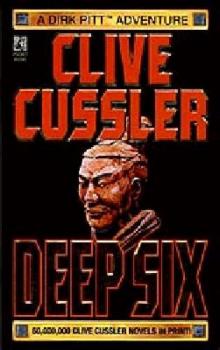 Deep Six
Deep Six Odessa Sea
Odessa Sea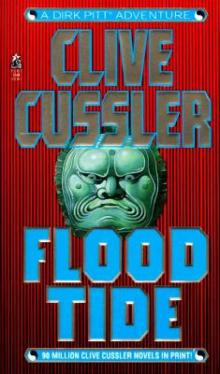 Flood Tide
Flood Tide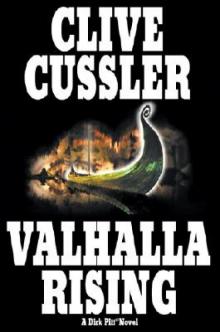 Valhalla Rising
Valhalla Rising Thriller 2
Thriller 2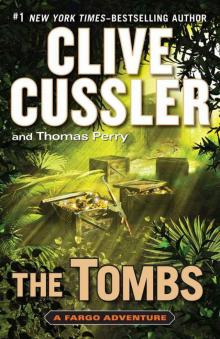 The Tombs
The Tombs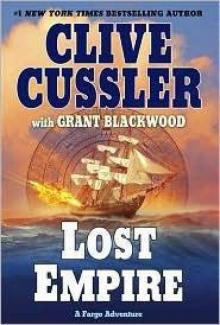 Lost Empire
Lost Empire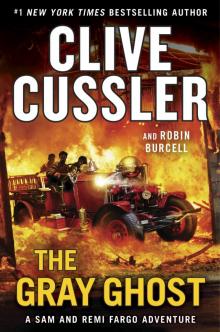 The Gray Ghost
The Gray Ghost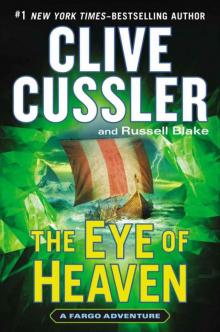 The Eye of Heaven
The Eye of Heaven Polar Shift
Polar Shift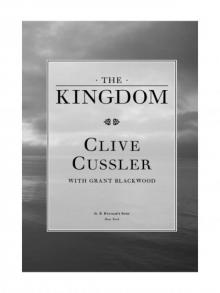 The Kingdom
The Kingdom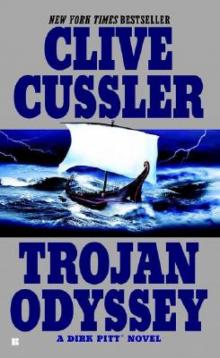 Trojan Odyssey
Trojan Odyssey Shadow Tyrants
Shadow Tyrants Nighthawk
Nighthawk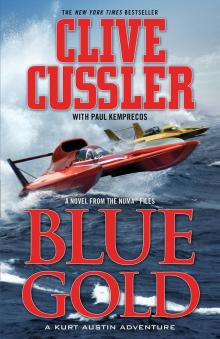 Blue Gold
Blue Gold Serpent
Serpent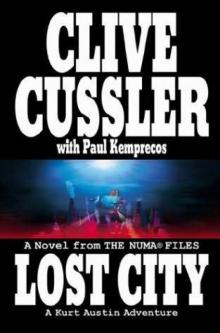 Lost City
Lost City The Gangster
The Gangster White Death
White Death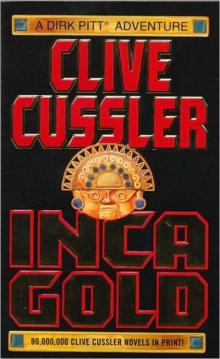 Inca Gold
Inca Gold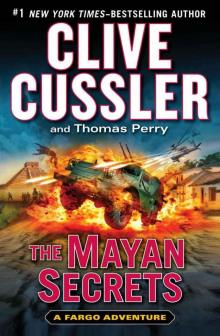 The Mayan Secrets
The Mayan Secrets The Pharaoh's Secret
The Pharaoh's Secret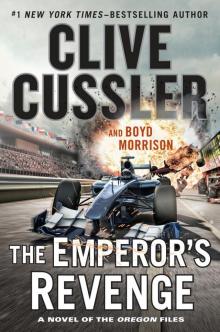 The Emperor's Revenge
The Emperor's Revenge Corsair
Corsair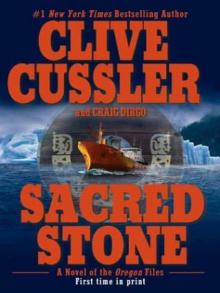 Sacred Stone
Sacred Stone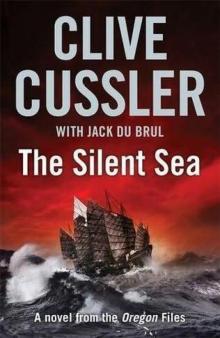 The Silent Sea
The Silent Sea The Rising Sea
The Rising Sea Black Wind
Black Wind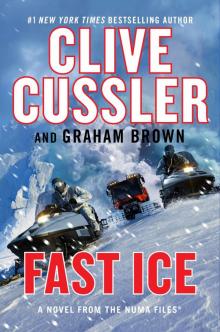 Fast Ice
Fast Ice Ghost Ship
Ghost Ship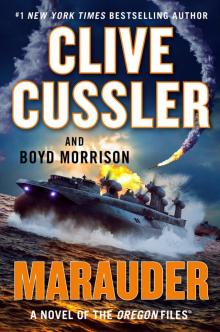 Marauder
Marauder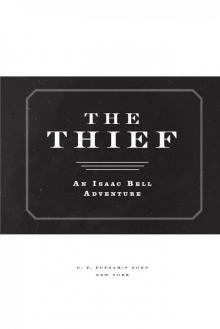 The Thief
The Thief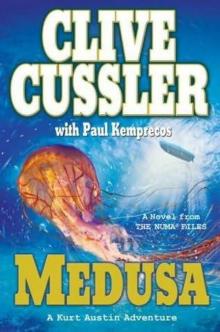 Medusa
Medusa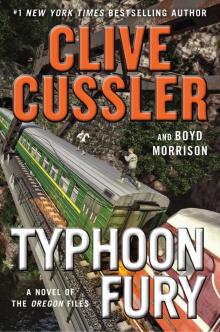 Typhoon Fury
Typhoon Fury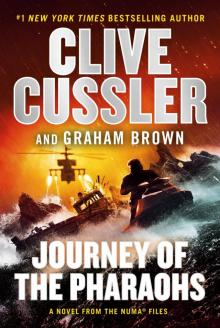 Journey of the Pharaohs
Journey of the Pharaohs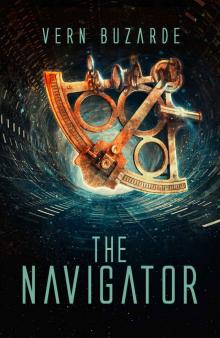 The Navigator
The Navigator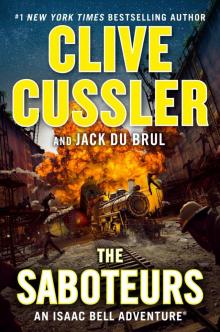 The Saboteurs
The Saboteurs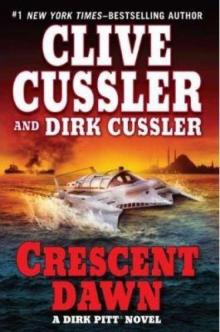 Crescent Dawn
Crescent Dawn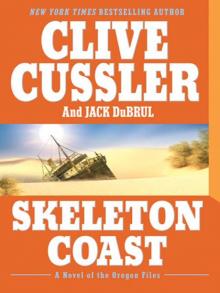 Skeleton Coast
Skeleton Coast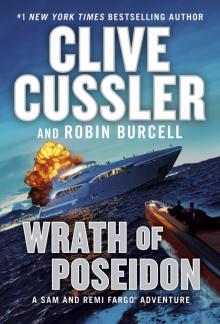 Wrath of Poseidon
Wrath of Poseidon The Mediterranean Caper
The Mediterranean Caper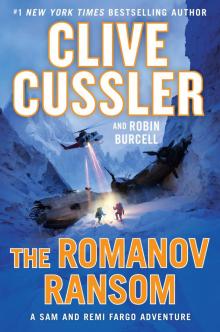 The Romanov Ransom
The Romanov Ransom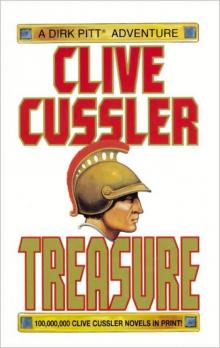 Treasure
Treasure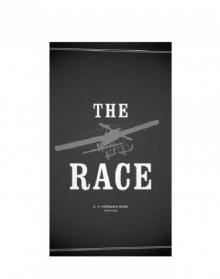 The Race
The Race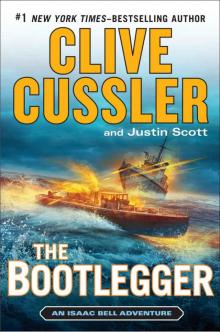 The Bootlegger
The Bootlegger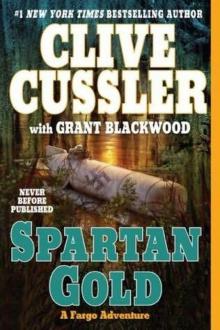 Spartan Gold
Spartan Gold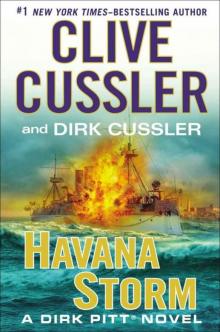 Havana Storm
Havana Storm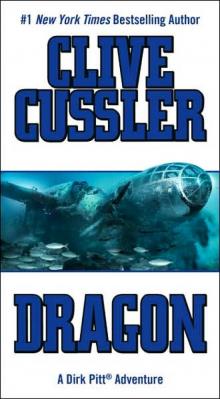 Dragon
Dragon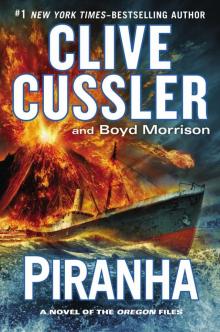 Piranha
Piranha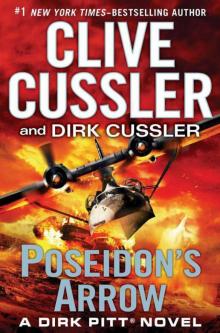 Poseidon's Arrow
Poseidon's Arrow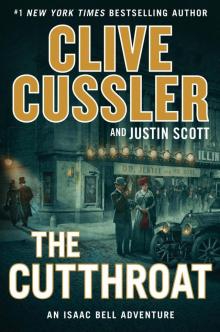 The Cutthroat
The Cutthroat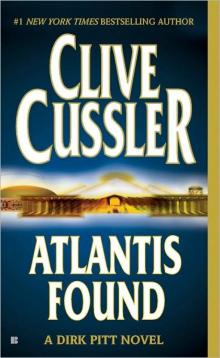 Atlantis Found
Atlantis Found The Jungle
The Jungle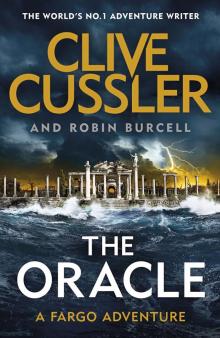 The Oracle
The Oracle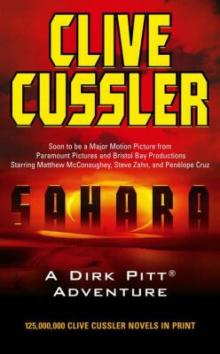 Treasure / Dragon / Sahara: Clive Cussler Gift Set
Treasure / Dragon / Sahara: Clive Cussler Gift Set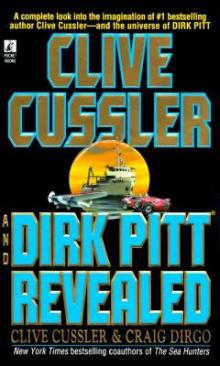 Clive Cussler and Dirk Pitt Revealed
Clive Cussler and Dirk Pitt Revealed The Sea Hunters
The Sea Hunters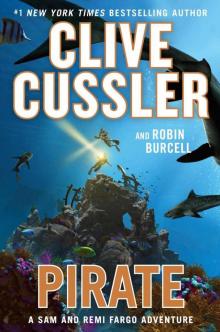 Pirate
Pirate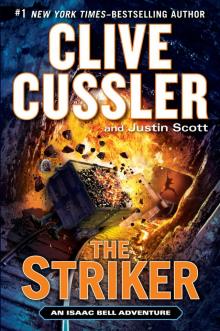 The Striker
The Striker Plague Ship
Plague Ship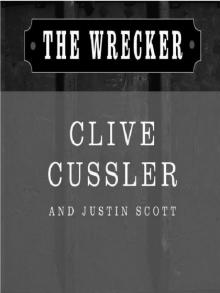 The Wrecker
The Wrecker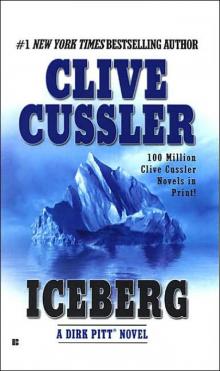 Iceberg
Iceberg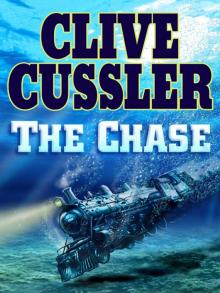 The Chase
The Chase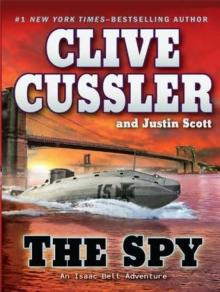 The Spy
The Spy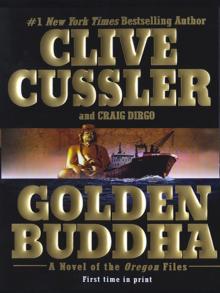 Golden Buddha
Golden Buddha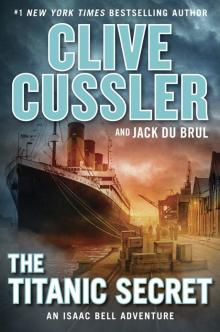 The Titanic Secret
The Titanic Secret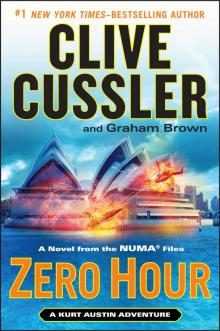 Zero Hour
Zero Hour Fire Ice
Fire Ice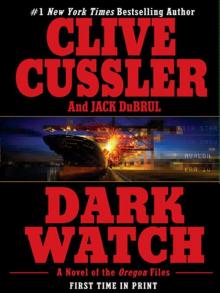 Dark Watch
Dark Watch The Storm
The Storm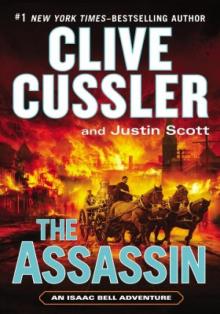 The Assassin
The Assassin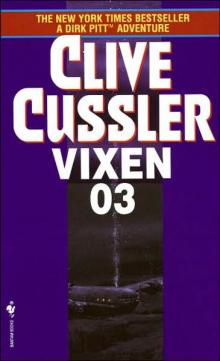 Vixen 03
Vixen 03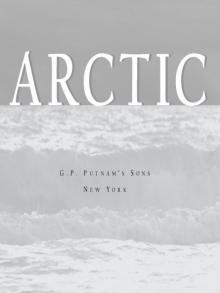 Arctic Drift
Arctic Drift Night Probe!
Night Probe! Cyclops
Cyclops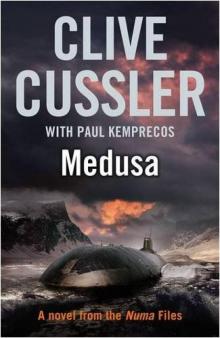 Medusa nf-8
Medusa nf-8 Shock Wave dp-13
Shock Wave dp-13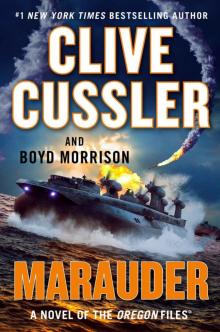 Marauder (The Oregon Files)
Marauder (The Oregon Files)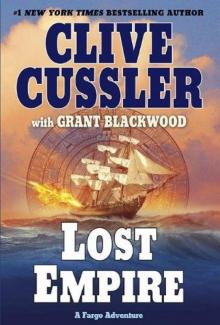 Lost Empire fa-2
Lost Empire fa-2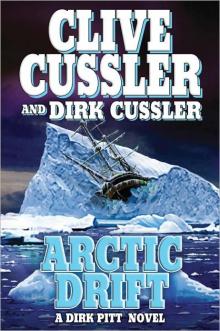 Arctic Drift dp-20
Arctic Drift dp-20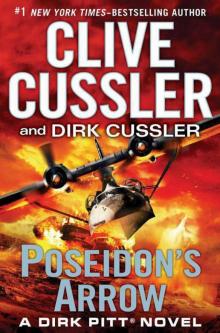 Dirk Pitt 22 - Poseidon's Arrow
Dirk Pitt 22 - Poseidon's Arrow Treasure of Khan dp-19
Treasure of Khan dp-19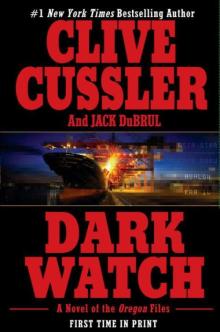 Dark Watch of-3
Dark Watch of-3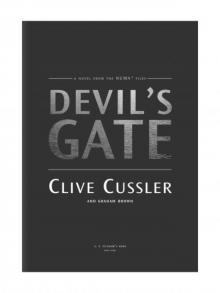 Devil's Gate
Devil's Gate The Sea Hunters II: More True Adventures with Famous Shipwrecks
The Sea Hunters II: More True Adventures with Famous Shipwrecks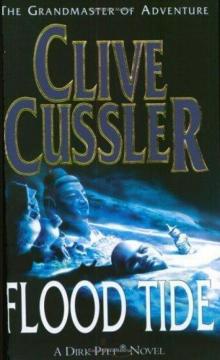 Flood Tide dp-14
Flood Tide dp-14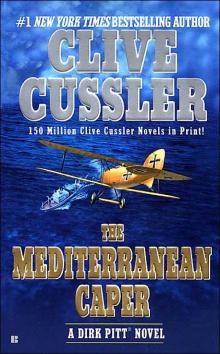 The Mediterranean Caper dp-2
The Mediterranean Caper dp-2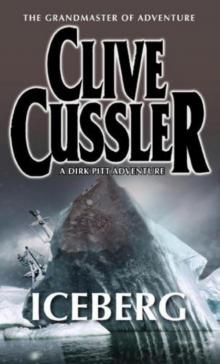 Iceberg dp-3
Iceberg dp-3 Sahara dpa-11
Sahara dpa-11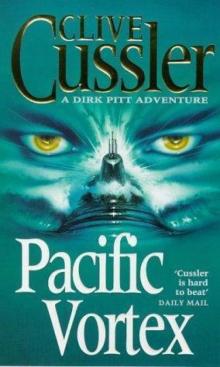 Pacific Vortex! dp-1
Pacific Vortex! dp-1 Deep Six dp-7
Deep Six dp-7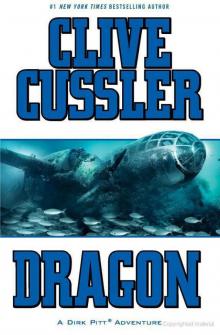 Dragon dp-10
Dragon dp-10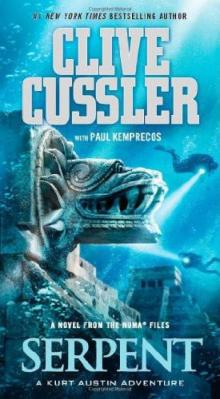 Serpent nf-1
Serpent nf-1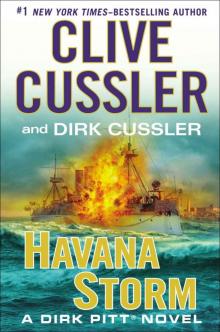 Havana Storm (Dirk Pitt Adventure)
Havana Storm (Dirk Pitt Adventure)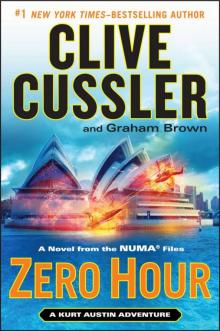 Zero Hour nf-11
Zero Hour nf-11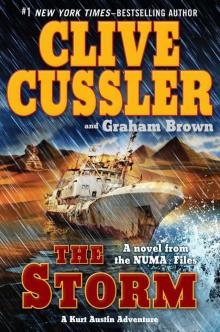 The Storm nf-10
The Storm nf-10 The Thief ib-5
The Thief ib-5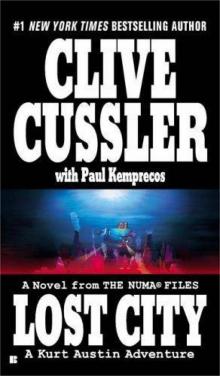 Lost City nf-5
Lost City nf-5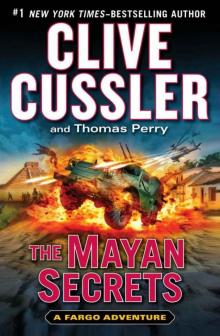 The Mayan Secrets fa-5
The Mayan Secrets fa-5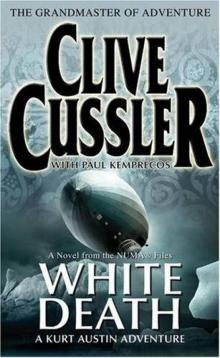 White Death nf-4
White Death nf-4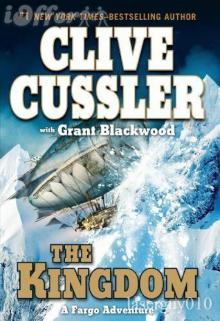 The Kingdom fa-3
The Kingdom fa-3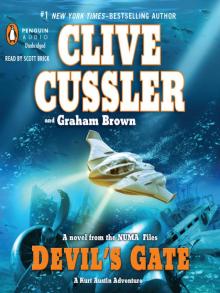 Devil's Gate nf-9
Devil's Gate nf-9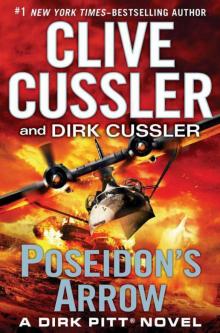 Poseidon's Arrow dp-22
Poseidon's Arrow dp-22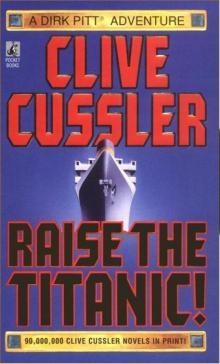 Raise the Titanic dp-4
Raise the Titanic dp-4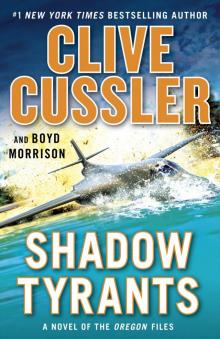 Shadow Tyrants--Clive Cussler
Shadow Tyrants--Clive Cussler Sacred Stone of-2
Sacred Stone of-2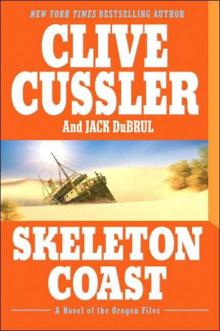 Skeleton Coast tof-4
Skeleton Coast tof-4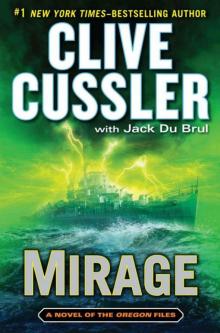 Mirage tof-9
Mirage tof-9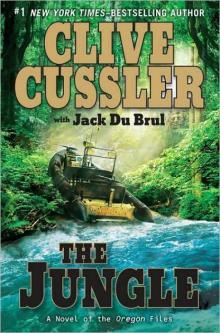 The Jungle of-8
The Jungle of-8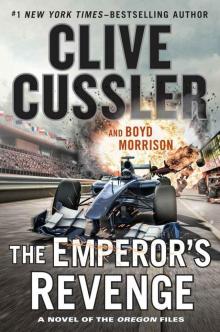 The Emperor's Revenge (The Oregon Files)
The Emperor's Revenge (The Oregon Files)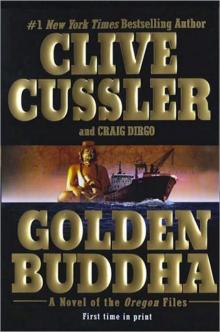 Golden Buddha of-1
Golden Buddha of-1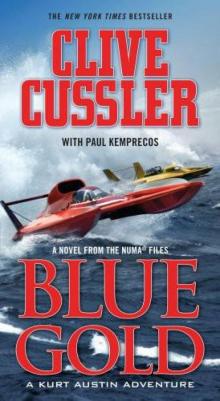 Blue & Gold
Blue & Gold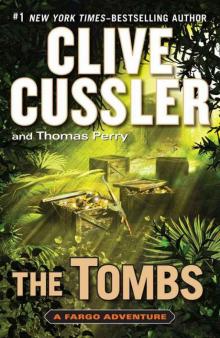 The Tombs fa-4
The Tombs fa-4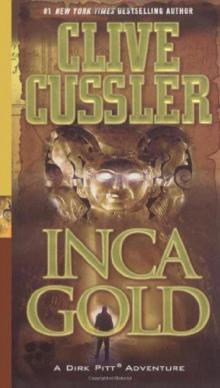 Inca Gold dp-12
Inca Gold dp-12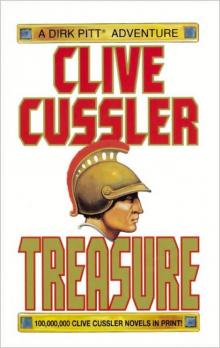 Treasure dp-9
Treasure dp-9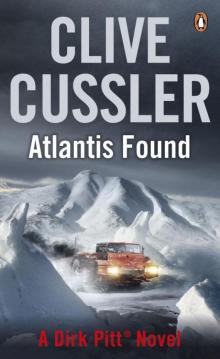 Atlantis Found dp-15
Atlantis Found dp-15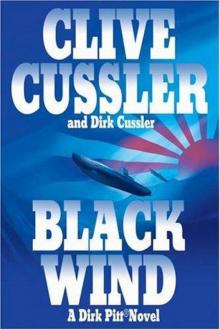 Black Wind dp-18
Black Wind dp-18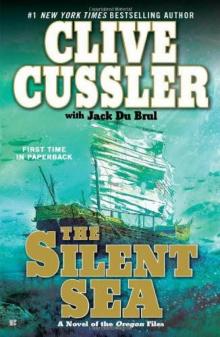 the Silent Sea (2010) tof-7
the Silent Sea (2010) tof-7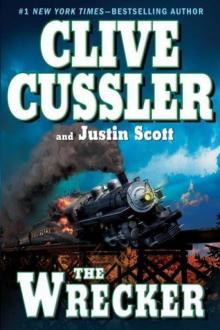 The Wrecker ib-2
The Wrecker ib-2 Fire Ice nf-3
Fire Ice nf-3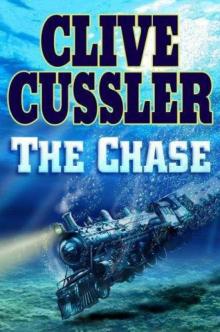 The Chase ib-1
The Chase ib-1 Sahara
Sahara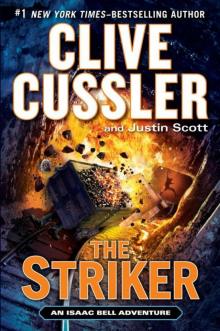 The Striker ib-6
The Striker ib-6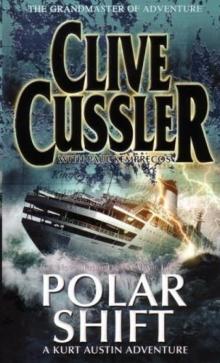 Polar Shift nf-6
Polar Shift nf-6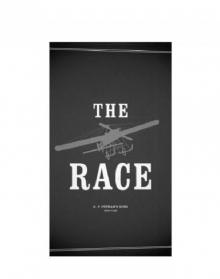 The Race ib-4
The Race ib-4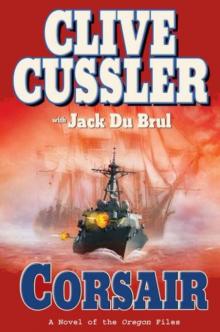 Corsair of-6
Corsair of-6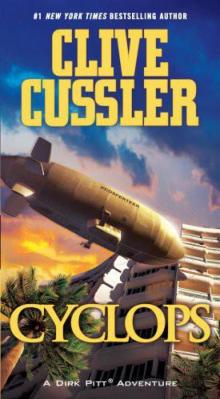 Cyclops dp-8
Cyclops dp-8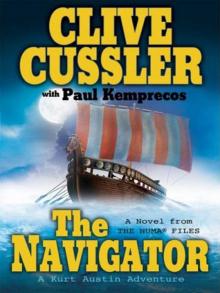 The Navigator nf-7
The Navigator nf-7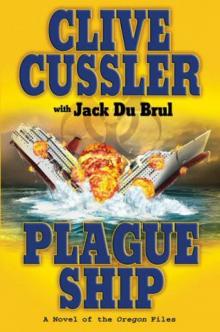 Plague Ship tof-5
Plague Ship tof-5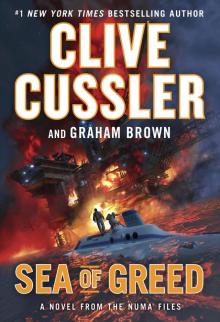 Sea of Greed
Sea of Greed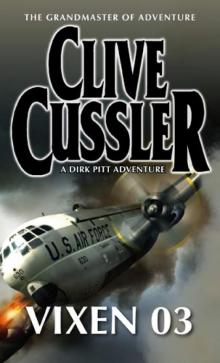 Vixen 03 dp-5
Vixen 03 dp-5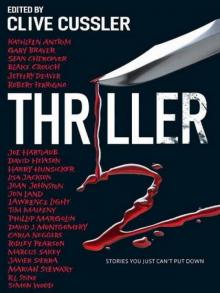 Thriller 2: Stories You Just Can't Put Down
Thriller 2: Stories You Just Can't Put Down